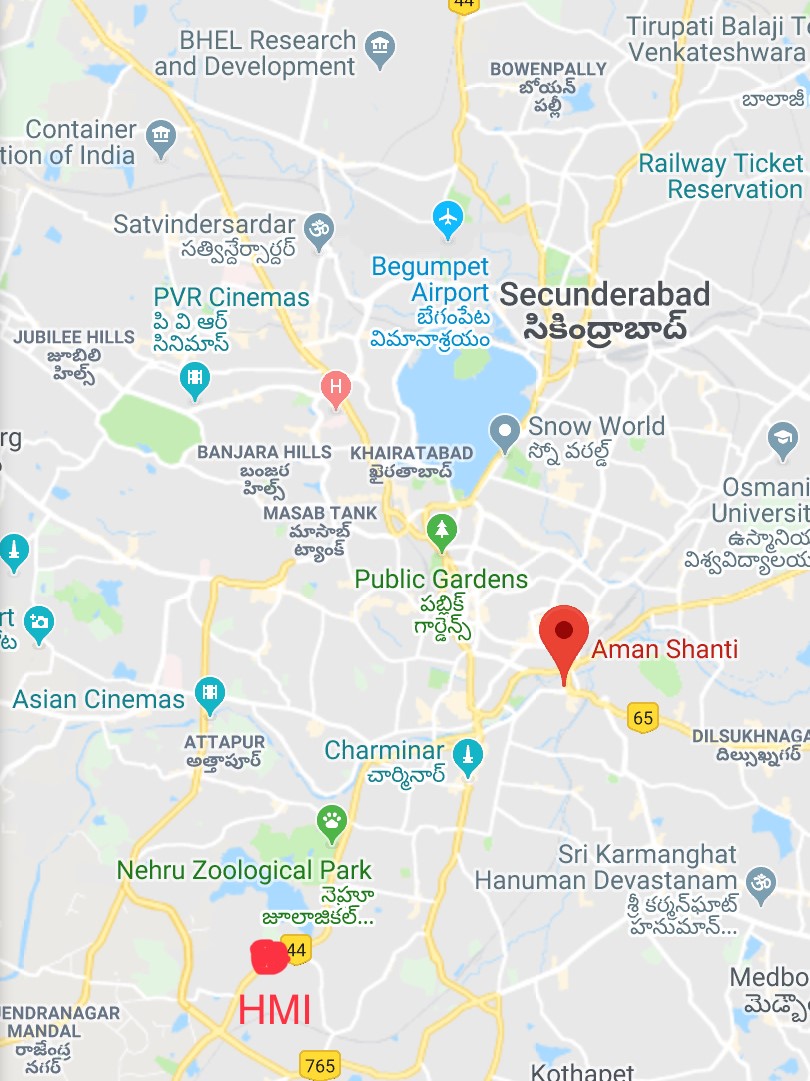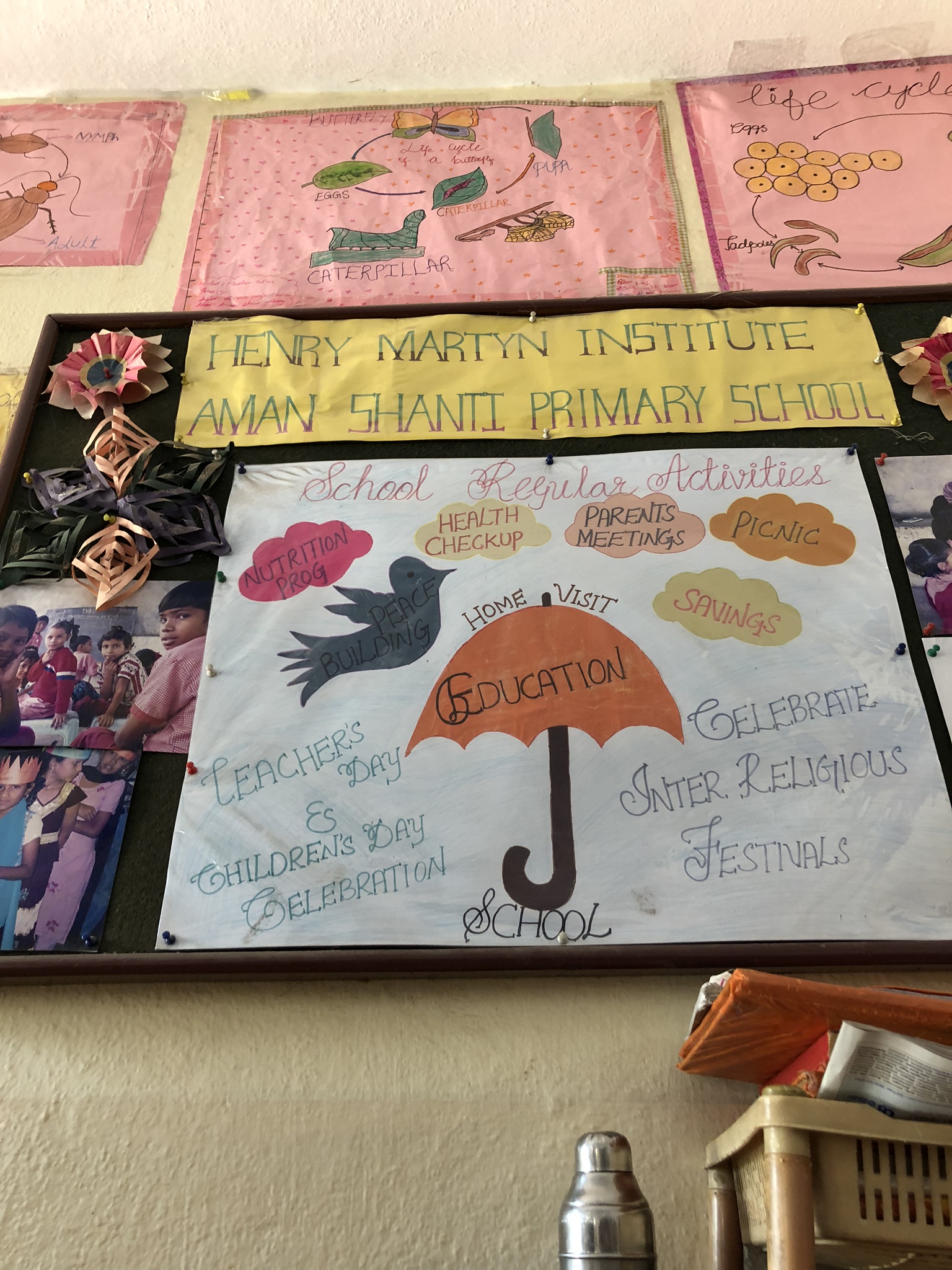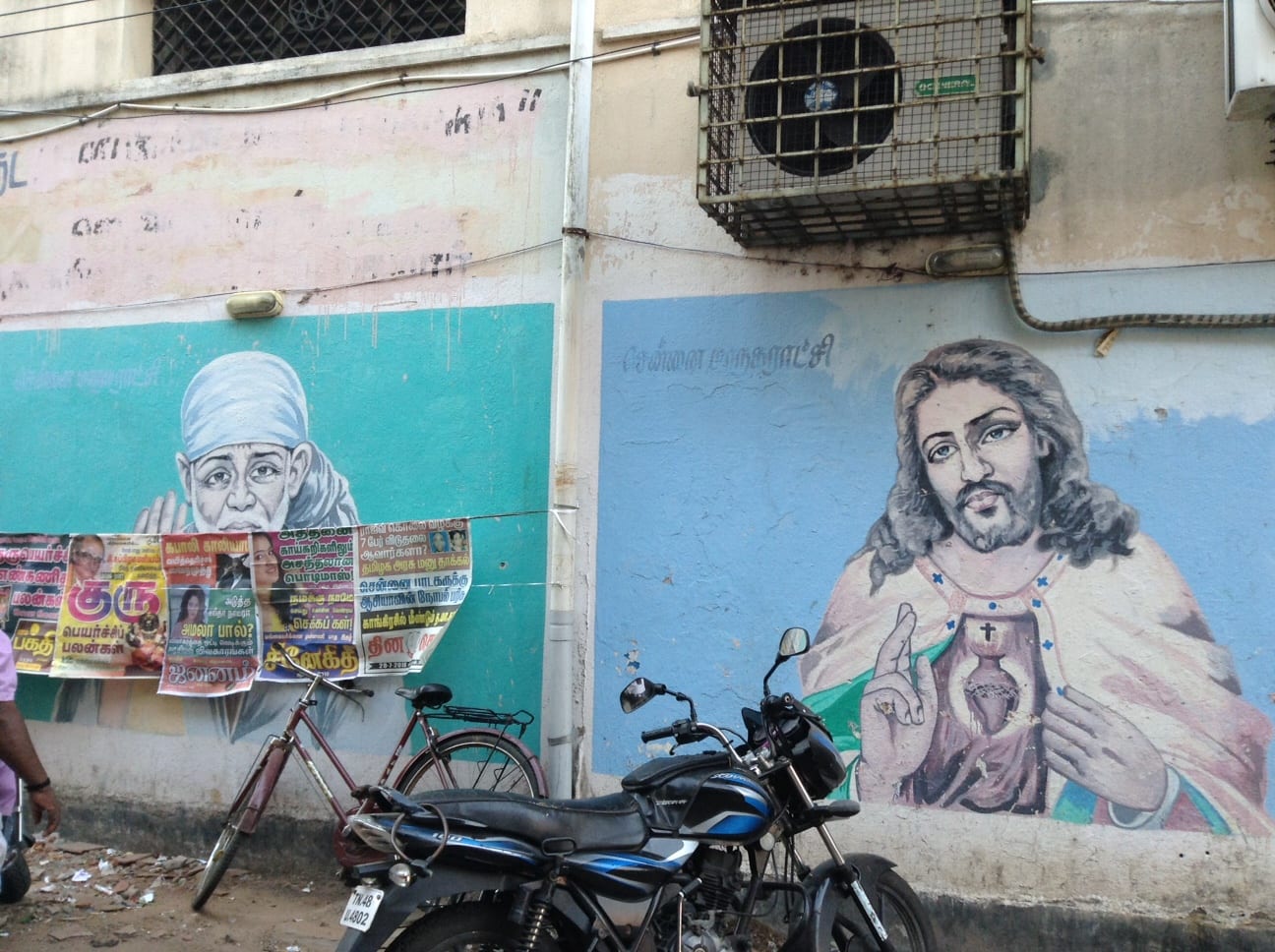Aman Shanti Primary School, HMI Community Center, Hyderabad
8 January 2019
Beth Westphal

Location of Aman Shanti Primary School in Hyderabad.

Poster on the wall of the school outlining the different goals and activities of the HMI primary school.

Hindu & Muslim girls and boys sitting together in a classroom on exam day
Barefoot girls and boys sit on plastic stools in the small, crowded classrooms in this place dedicated to inter-religious understanding. Their teachers, dressed in sarees or hijab, shepherd and guide as the children chatter quietly among themselves, observing the strangers who have come into their space.
Learning in a community of different faiths
The Henry Martyn Institute (HMI) community center is located in a poor area of Hyderabad, right on the border between a Muslim and a Hindu community. This location is significant because it mirrors the purpose of the school– promoting interfaith relations and reconciliation (the same as HMI’s goals). The primary school includes 140 students, grades K-5, from both the Hindu and the Muslim communities, bringing them together in a learning environment to promote peace and understanding. However, this is no easy task; relations between the two communities have been violent and tense in the recent past. There have been squabbles over sacred spaces, with Hindus attacking Muslim places of worship and vice versa. The school therefore sits precariously in the middle of a contested space; it cannot lean too far one way or another or the lack of support (and most likely outright opposition) from parents and community leaders will cause it to fall and crumble. Therefore, the school’s incorporation of both religious traditions as well as the implementation of a practice referred to as ‘playful peace’ are vital for the school’s survival.
When we first entered the building, we were greeted with tilaka (a mark on our foreheads). Tilaka is a tradition with Hindu roots but is now more widely practiced among Sikhs, Jains, and Christians, though notably not Muslims, throughout India. In accordance with Muslim teaching, the health center (located in the same building as the school and responsible for doing health checkups on all students) does not give out contraception (although this issue is far more complicated). Additionally, the center employs both Hindu and Muslim teachers who teach “playful peace”, in which the students learn about and appreciate each others’ religious traditions and festivities like Diwali and Ramadan. Through low-stakes games, the children are brought together in a spirit of fun and camaraderie, realizing their religious differences while also recognizing their similarities as children.
The poster hanging on the wall (in the photo) illustrates many pieces that make up the whole picture— a nutrition program, home visits, parent meetings, as well as celebrations of inter-religious festivals which fall under the umbrella of education. Each piece alone is not enough to achieve the seemingly lofty and unreachable goals of interfaith dialogue and reconciliation, but when they are taken all together and put into practice like they are at Aman-Shanti, hope for an understanding and peace between two religions becomes more possible.
